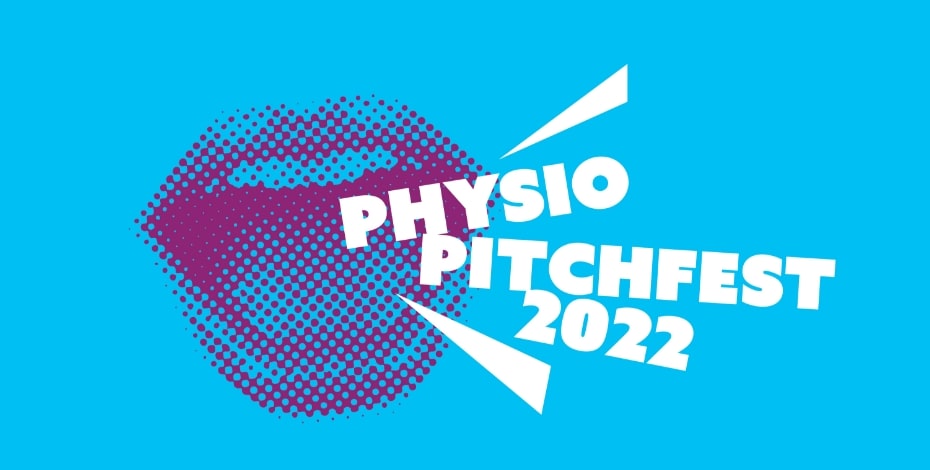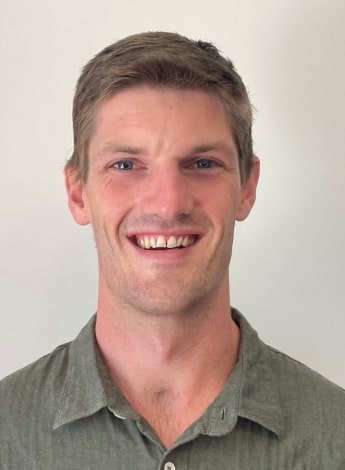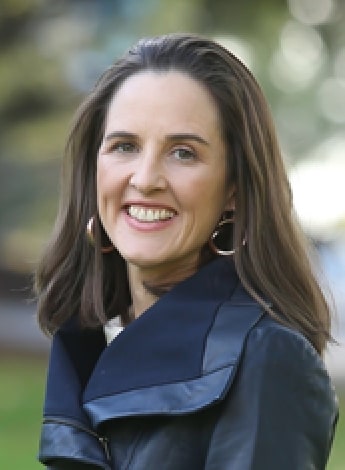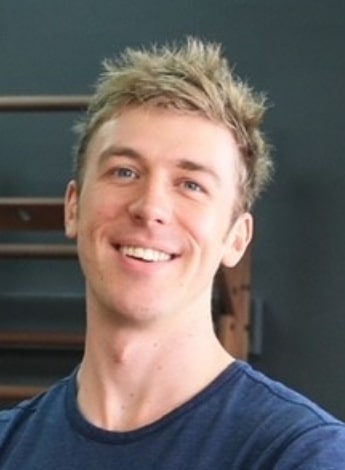
Pitching products to improve physio

August InMotion featured the Judges’ Award and People’s Choice Award winners from PitchFest, held virtually in April. Here we meet the four other finalists whose projects once again show the breadth of ideas among the contestants.
Mobilising shoulders after surgery
As a physiotherapist, Luke Mason APAM often observes slow progress in patients’ post-shoulder surgeries, including rotator cuff repairs and shoulder replacements.
‘Some people are still struggling with mobility and function six months post-operatively.
'Rehabilitation after shoulder surgery hasn’t evolved in line with the improvements in surgical techniques,’ he says.
Four years ago, Luke started working on a device to help with early mobilisation of the shoulder after surgery.
In conjunction with Flinders University’s biomedical engineering program, he designed an initial prototype of the Shoulder Mobiliser and the product was accepted into South Australia’s Medical Device Partnering Program for further development.
The Shoulder Mobiliser is a dumbbell-shaped device that sits on a table surface.
When activated, it drives the arm forward or out to the side, moving the joint gently without affecting surgical repairs.

Luke Mason.
It links to an app that tracks repetition and range of motion and allows clinicians to set up rehabilitation protocols, remotely monitor patient progress and interact directly with surgeons.
With the fourth-generation prototype design completed, the Shoulder Mobiliser is now ready for more rigorous testing, says Luke.
An electromyography study has begun, to establish that the device works as expected and a larger clinical trial is in the planning stages.
Luke says that in addition to rehabilitation after shoulder surgery, he sees a use for the mobiliser in treating patients with frozen shoulders and following hydrodilatation of the shoulder joint.
The product development process has been a fantastic learning experience for Luke and his development partner, Dr Jonathan Cabot, an orthopaedic surgeon.
‘Working as a clinician, you don’t really see what is involved in exploring an idea and progressing towards a commercialised product.
'Then you’re meeting with different people who all have wonderful, innovative ideas and it helps to refine your thoughts.
'I’ve really enjoyed what I’ve learnt from the process and am so grateful for the support we have received along the way,’ he says.
Bed-bound rehabilitation
The Wave Press is a rehabilitation device designed to give patients the opportunity to increase the amount of exercise they can do while bed-bound.
Physiotherapist Nicholas Piggott APAM came up with the idea after attending a workshop that emphasised the need for rehab patients to do more between therapy sessions.
Typically, rehabilitation patients have two physiotherapy sessions a day.
However, aside from expensive robotics equipment and makeshift devices, there are not many options for bed-bound patients to continue exercises outside the gym.
Nicholas was shown one such device, a kitchen scale with a phone book attached that patients pushed against with their foot to make the needle move.
‘It’s not really a good solution and I thought it would be great if there was something else,’ he says.
Nicholas turned to his father, a high school design technology teacher and tinkerer, with his ideas and the two came up with the first prototype of the Wave Press, a leg-press-style device that allows patients to slowly build up their leg strength.
‘It’s not a replacement for physiotherapy; it’s an adjunct to it.
'It’s to be used between physiotherapy sessions. Alternatively, a physio could use this product during their session.

Nicholas Piggott.
'The primary drive behind it was to come up with a viable option for making progress with rehab outside of therapy sessions,’ Nicholas says.
Nicholas says that the latest prototype, which has evolved from the version he showed at PitchFest earlier this year, is a lot more robust and functional.
He’s talking to several people in the rehabilitation space about doing feasibility studies with the product ahead of a planned clinical trial.
‘Initially, we want to get feedback about how the population responds to using it.
'Then we’d like to do a longer study to look at the outcomes when patients use it regularly over a period of time,’ Nicholas says.
‘There’s evidence that progressive resistance training has a positive effect on rehabilitation, so we want to see if this modality will facilitate that.’
Nicholas says that the process of applying for and pitching to the panel at PitchFest has inspired him to think more broadly about how digital technologies could be integrated into the Wave Press. At the moment it is purely a mechanical device.
‘I think when you get your brain ticking in that way, you start to view clinical problems a bit differently,’ he says.
‘I’m excited to get the ball rolling on it again, that’s for sure.’
Kickstarting an exercise program in pools
Hydro Functional’s Kickstarter program is an aquatic exercise program for people with common musculoskeletal conditions, including arthritis.
Designed by a team of aquatic physiotherapists and a fitness industry expert, it’s a six-week program of exercises delivered by video and performed in the pool.
The only requirements are a pool and a way to watch the videos while in the water—the program doesn’t require an instructor to be present.
‘We really wanted to make it accessible to people—we particularly wanted to make sure that the programs people are doing are going to deliver the best results for them,’ says Emily Ramage APAM, a Melbourne based physiotherapist and researcher.
‘There are lots of barriers to getting people exercising and staying well. Water is really enabling and a good place to start.’
The Kickstarter program is based on aquatic exercise research spanning 15 years.
After an initial telehealth consultation, participants receive a six- week-long program of exercises designed to improve leg strength, fitness and balance.

Emily Ramage.
The program is delivered as videos that can be followed via a phone or tablet or even a larger screen placed near the pool.
Kickstarter is currently available through a selection of aquatic centres in New South Wales and Victoria, and the Hydro Functional website.
‘We’ve got some great partnerships with a number of pools that have been promoting the program,’ Emily says.
The team are currently evaluating the pilot program that recently ran across 10 public pools across New South Wales and Victoria.
‘We were hoping that participants would get to the pool twice a week for the six weeks and we’ve seen great engagement,’ Emily says.
Hydro Functional plans to develop tailored programs based on the needs of particular communities, venues and services.
This may include hybrid models combining the video program with in-person instructors and programs that support exercise for people with other chronic diseases,’ says Emily.
Click here for more information.
Making the most of private practice clinical placements
Clinical placements in private practice are becoming more common for physiotherapy students, but many physiotherapists don’t have experience with mentoring students during placements.
APA Musculoskeletal Physiotherapist Sam Suke, principal physiotherapist at Exercise Thought Physiotherapy, has developed a suite of resources to make it easier for private practices to give students a high-quality clinical placement.
‘We know that a lot of private practices don’t have the resources or don’t have the capacity to look out for students in a highly educational way and a lot of students end up observing the physiotherapist on placement instead of engaging.
'These tools make it easier for students to engage in the diagnosis, the decision-making and the clinical reasoning that we know they need to develop before they begin work as physios,’ says Sam.
Freely available on his practice’s website, the resources include a hands-on checklist of the most important skills in which students need to be confident before graduation, a student guide covering the week-by-week expectations for the placement, a clinical reasoning form to help students develop diagnostic skills and an evidence-based practice applicator that allows students to apply published research evidence to cases they see during their placement.
‘Diagnosis isn’t something that you master in 12 months. It takes years of practice,’ Sam says.

Sam Suke.
‘With a diagnosis framework, a student can begin to develop that skill. We our student resources freely available because we believe it’ll improve the physio profession.’
Exercise Thought is also developing resources for physiotherapy clinics that are interested in hosting clinical placements, including guides to invoicing students, assessing students using the Assessment of Physiotherapy Practice and maximising education outcomes while maintaining clinical productivity.
Since 2020, 85 students from five physiotherapy schools in Victoria have used the Exercise Thought’s student resources while on placement at Exercise Thought.
Pilot data on placement outcomes has been collected by Exercise Thought in collaboration with Swinburne University.
Click here for more information.
A PRF initiative, Pitchfest seeks to progress ideas that address unmet clinical needs, advance physiotherapy practice and lead to adaptation in the workplace.
© Copyright 2024 by Australian Physiotherapy Association. All rights reserved.





